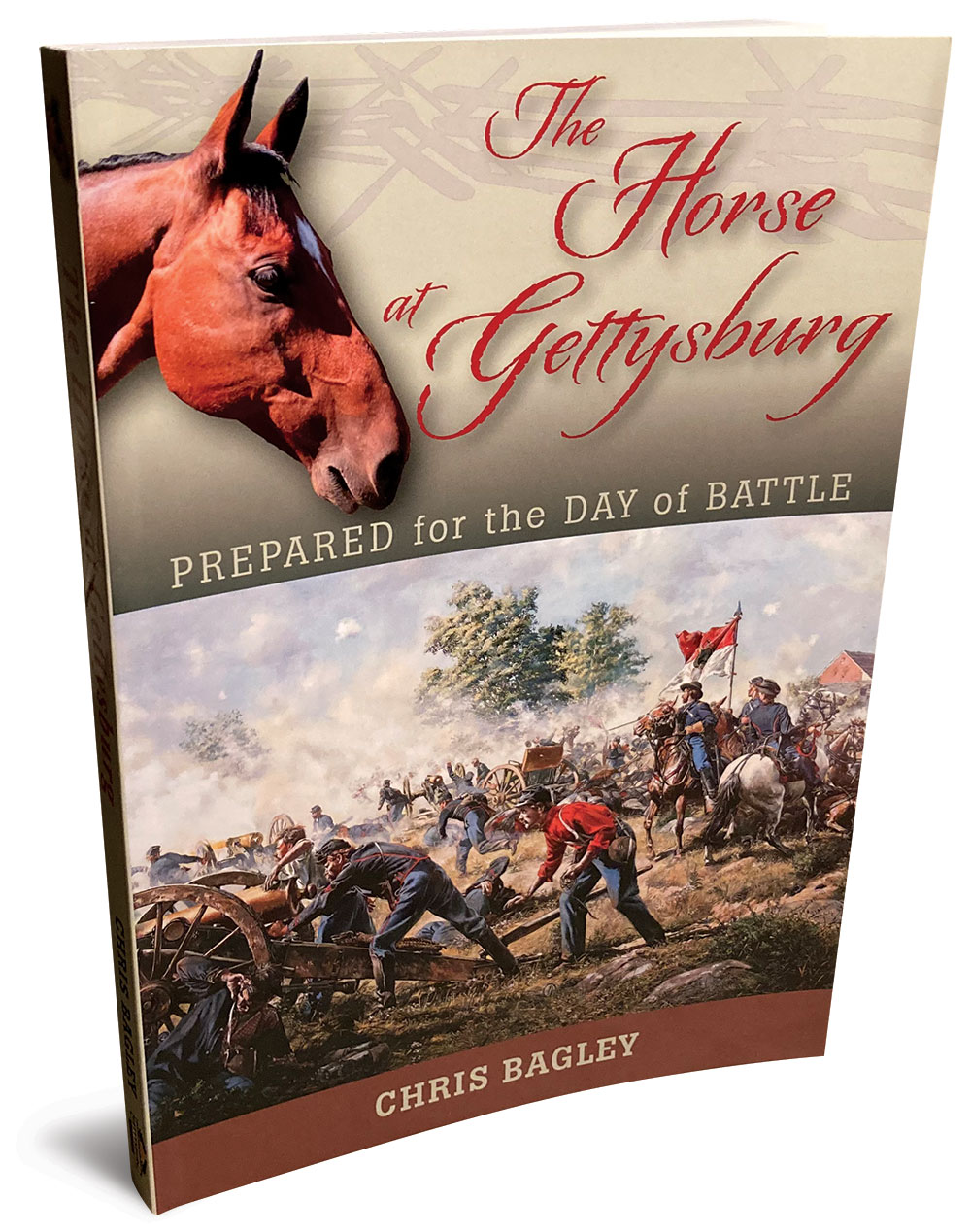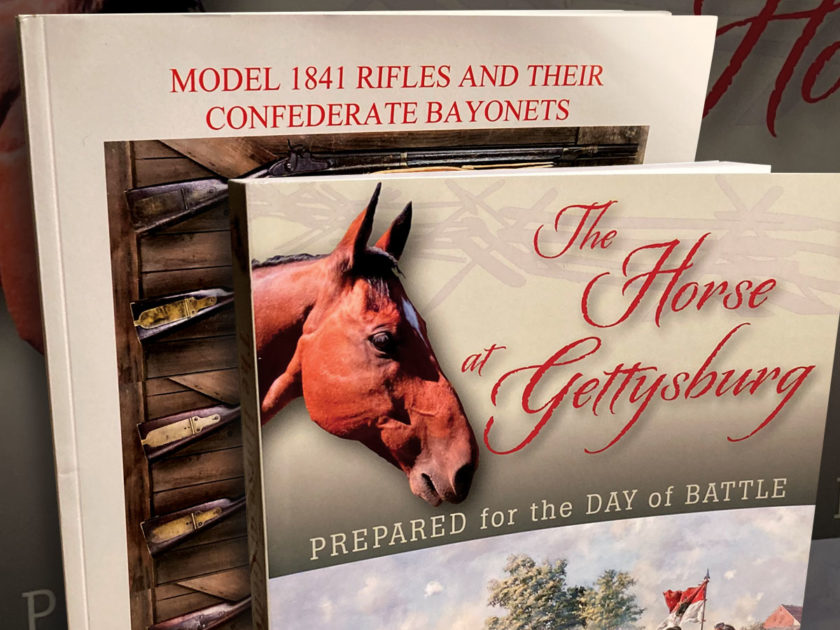The Appealing, Accurate Mississippi Rifle
Tom Singelyn purchased his first Mississippi rifle from a collector-dealer in 1963. Thus began a lifetime fascination with the well-designed, highly accurate longarm that has been a favorite with collectors—and American soldiers who first carried them more than 175 years ago.
 In Model 1841 Rifles and Their Confederate Bayonets, Singelyn focuses his considerable knowledge on a specific use case: Six types of unique modifications of the storied rifle and their bayonets as used by the Confederate army. The author presents the information in concise descriptions that are useful to the layperson or the scholar. Photographs by John Willyard profusely illustrate the text. The focal quality and detail of these images compliments the copy, and the high production values and semi-gloss pages make the photographs pop. Singelyn is careful to point out that the gun slings are replicas of originals, which keeps the images—and the author—honest.
In Model 1841 Rifles and Their Confederate Bayonets, Singelyn focuses his considerable knowledge on a specific use case: Six types of unique modifications of the storied rifle and their bayonets as used by the Confederate army. The author presents the information in concise descriptions that are useful to the layperson or the scholar. Photographs by John Willyard profusely illustrate the text. The focal quality and detail of these images compliments the copy, and the high production values and semi-gloss pages make the photographs pop. Singelyn is careful to point out that the gun slings are replicas of originals, which keeps the images—and the author—honest.
The six variations discussed involve four Southern states: Alabama, South Carolina, Virginia, and Texas. Of particular interest are the descriptions of the condition of the rifles. Singelyn treats them in the same way a biographer might portray an individual. For example, one of the rifles, manufactured at Harper’s Ferry, Va., and altered for a sword bayonet produced by Boyle, Gamble & McFee is described as much used and showing extreme combat condition. Initials have been carved in the butt stock. A two-inch piece of wood from another Model 1841 was used to repair the stock, and “a considerable amount of wood is missing behind the percussion nipple, indicating much firing.” One comes away with the certain knowledge that this gun is a battle-hardened veteran of many an engagement—and has the scars to prove it.
In fact, all the rifles here are veterans of the technology wars of the antebellum period, adapted to meet advances in equipment and tactics. They bore witness to the rigors of camp and campaign, as evidenced in the pitted metal and worn wood. Singelyn breathes life into these antique weapons of war with an impressive depth of knowledge. Pick up a copy.
Model 1841 Rifles and Their Confederate Bayonets
By Thomas E. Singelyn, D.D.S., with photos by John Willyard
48 pages
Self-published
Softcover (contact the author: 313-886-2787)
A Unique Look at Gettysburg’s Horses
There are a handful of senior officers whose names are forever linked to the Battle of Gettysburg. They include Strong Vincent, the brigade commander in the 5th Corps of the Army of the Potomac. His mortal wounding at Little Round Top is part of the lore of the struggle for supremacy on the rocky southern slopes near the southeastern Pennsylvania town.
 But what of Vincent’s mount? Chris Bagley tells us a bit about him in his book, The Horse at Gettysburg: Prepared for the Day of Battle. Bagley explains how, after Vincent’s brigade flag attracted the attention of Confederates, he told his orderly, Pvt. Oliver Willcox Norton (of Taps fame) to take shelter behind rocks. At that point, Vincent and Norton dismounted from their horses. Vincent handed the reins of Old Jim to Norton. After the fight began in earnest, Vincent suffered his fatal wound.
But what of Vincent’s mount? Chris Bagley tells us a bit about him in his book, The Horse at Gettysburg: Prepared for the Day of Battle. Bagley explains how, after Vincent’s brigade flag attracted the attention of Confederates, he told his orderly, Pvt. Oliver Willcox Norton (of Taps fame) to take shelter behind rocks. At that point, Vincent and Norton dismounted from their horses. Vincent handed the reins of Old Jim to Norton. After the fight began in earnest, Vincent suffered his fatal wound.
This is one of many references to the large number of mostly nameless horses present during the battle. In the foreword, Terry L. Latschar, a Licensed Battlefield Guide and former park ranger at Gettysburg, notes an estimated 80,000 horses and mules belonging to both armies were present at Gettysburg, and about 5,000 are believed to have died. These horses were trained for a variety of roles, including officers’ mounts, duty with the artillery, or part of the ubiquitous wagon trains.
Bagley, who, like Latschar, is a guide at Gettysburg, writes of the fight through the experiences of horses. The first quarter of the volume includes vocabulary definitions, a diagram, and breed descriptions. The rest takes readers through the battle in order of key events, peppered with equine information.
Throughout the book, the relationship between a soldier and his horse is not far from the surface, as in the anecdote of Vincent and Old Jim before Little Round Top. Bagley observes: “The horse depended upon his master, and its master, in turn, depended upon his horse. To witness one of these animals severely wounded and writhing in pain, neighing and winnying while looking to you, its friend and companion for any aid or succor, was more than many could bear.”
The Horse at Gettysburg is a unique volume on a neglected aspect of the war, and a worthy library addition.
The Horse at Gettysburg: Prepared for the Day of Battle
By Chris Bagley
224 pages
Gettysburg Publishing, LLC
Softcover (major booksellers)
SPREAD THE WORD: We encourage you to share this story on social media and elsewhere to educate and raise awareness. If you wish to use any image on this page for another purpose, please request permission.
LEARN MORE about Military Images, America’s only magazine dedicated to showcasing, interpreting and preserving Civil War portrait photography.
VISIT OUR STORE to subscribe, renew a subscription, and more.

